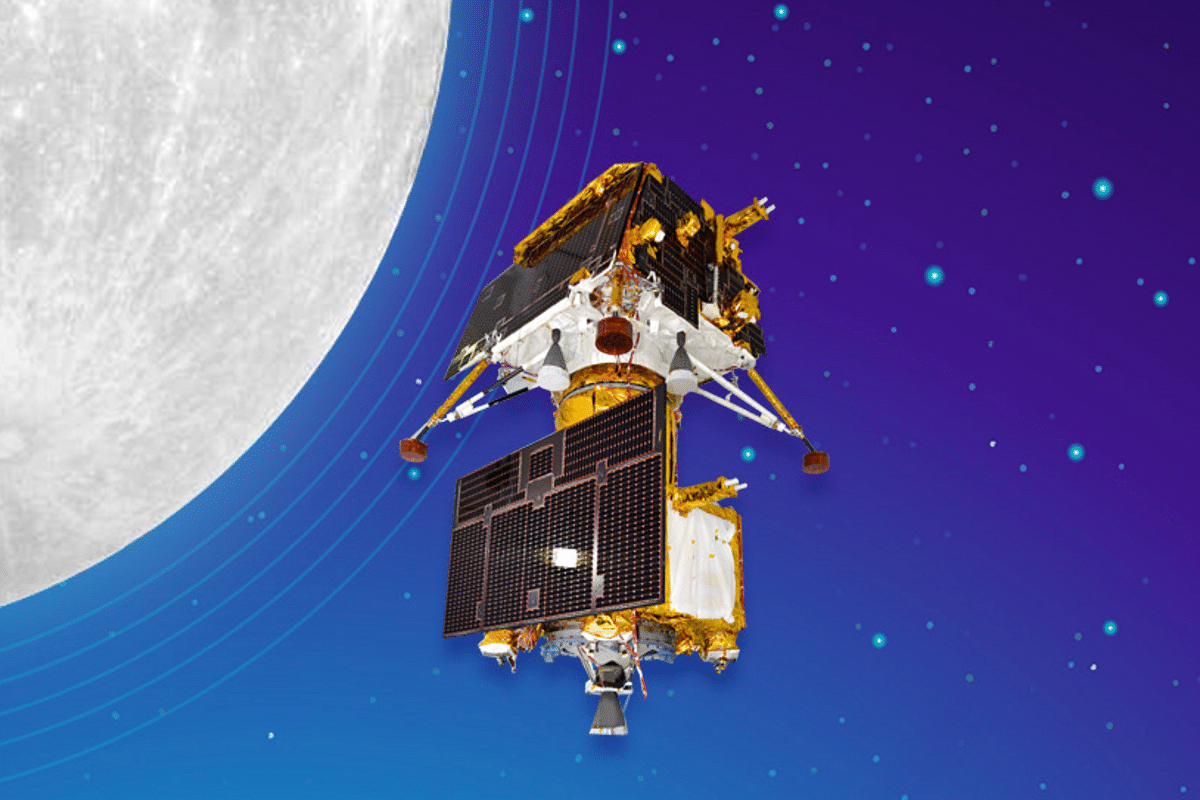Science
Chandrayaan-3: Lander Vikram To Enter Final Phase Of Journey To Moon's Surface Today With Deboosting Manoeuvre

The Chandrayaan-3 propulsion module. (ISRO)
In a pivotal stride towards its lunar touchdown, Chandrayaan-3's Vikram lander is poised to execute its deboosting manoeuvre at around 4 pm today, 18 August, as stated by the Indian Space Research Organisation (ISRO).
During this critical process, the Vikram lander will undertake two successive orbital reduction manoeuvres, laying the groundwork for its ultimate descent onto the lunar surface scheduled for 23 August, around 5:47 pm.
The most recent development in the Chandrayaan-3 mission unfolded on 17 August, when the lander module – consisting of the Vikram lander and Pragyan rover – adroitly separated from the propulsion module at 1:15 pm, propelling the mission into its ultimate phase.
Anticipated "Deboosting" for Vikram
Over the next five days, the Vikram lander will undergo two consecutive orbital reduction manoeuvres to fine-tune its trajectory.
The initial orbital manoeuvre is set to position Vikram in a circular orbit located at an altitude of 100x100 km above the lunar surface.
Subsequently, a following manoeuvre will strategically place the lander in its final orbit, at a height of 100x30 km above the moon. From this advantageous perspective, Vikram will initiate its final descent to the lunar surface and deploy the rover.
An ISRO official stressed that Vikram will adopt a more gradual movement pattern, facilitating its attainment of the intended orbit. This orbital path will position Vikram with its closest point to the moon (Perilune) at 30 km and the farthest point (Apolune) at 100 km.
Role of the Propulsion Module
While Vikram engages in its intricate orbital manoeuvres, the propulsion module will maintain its existing orbit, as verified by ISRO.
Significantly, the propulsion module accommodates the scientific payload named Spectro-polarimetry of HAbitable Planet Earth (SHAPE).
This advanced instrument will conduct a spectroscopic exploration of Earth's atmosphere, with a focus on gauging polarization fluctuations within cloud formations.
Support Swarajya's 50 Ground Reports Project & Sponsor A Story
Every general election Swarajya does a 50 ground reports project.
Aimed only at serious readers and those who appreciate the nuances of political undercurrents, the project provides a sense of India's electoral landscape. As you know, these reports are produced after considerable investment of travel, time and effort on the ground.
This time too we've kicked off the project in style and have covered over 30 constituencies already. If you're someone who appreciates such work and have enjoyed our coverage please consider sponsoring a ground report for just Rs 2999 to Rs 19,999 - it goes a long way in helping us produce more quality reportage.
You can also back this project by becoming a subscriber for as little as Rs 999 - so do click on this links and choose a plan that suits you and back us.
Click below to contribute.
Latest